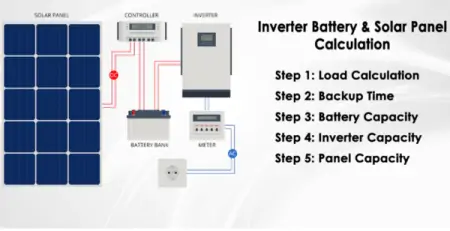Residential solar panel efficiency
Solar panel efficiency refers to the ability of a solar panel to convert sunlight into usable electricity. It is an important factor to consider when choosing solar panels for residential use because it affects the amount of energy a homeowner can generate and the return on investment. Understanding the efficiency of solar panels is important for homeowners because it can impact the overall performance and cost-effectiveness of their solar panel system. Installing efficient solar panels also has environmental benefits. By producing more energy with fewer panels, homeowners can reduce their carbon footprint and contribute to a cleaner, more sustainable future.
Factors that affect solar panel efficiency
The type and quality of solar panels used can significantly impact their efficiency. Monocrystalline solar panels, for example, typically have a higher efficiency rating than polycrystalline solar panels. The materials used in the manufacturing process and the quality of construction also play a role in determining the efficiency of the panels.
The angle and direction at which solar panels are installed can also impact their efficiency. Panels facing south with an angle of around 30 degrees tend to perform the best in most locations. If the panels are not installed at the optimal angle or direction, they may not receive as much sunlight, leading to reduced efficiency.
Temperature and weather conditions can affect the efficiency of solar panels. As temperatures increase, solar panel efficiency can decrease. Similarly, cloudy or overcast days can result in reduced efficiency because the panels receive less direct sunlight.
Shading and obstructions can also affect solar panel efficiency. If trees or buildings cast shadows on the panels, their efficiency may decrease. Panels installed on rooftops with obstructions such as vents, chimneys, or antennas may also experience reduced efficiency.
Types of solar panels for residential use
Monocrystalline solar panels are made from a single crystal of silicon, making them highly efficient and durable. They are the most expensive option but offer the best performance in terms of efficiency and longevity.
Polycrystalline solar panels are made from multiple crystals of silicon, making them less efficient than monocrystalline panels. However, they are more affordable and still offer a good level of efficiency for residential use.
Thin-film solar panels are made by depositing a thin layer of photovoltaic material onto a substrate. They are less efficient than crystalline solar panels but are more flexible and lightweight, making them suitable for certain applications such as portable solar panels or curved surfaces.
Bifacial solar panels can generate electricity from both sides of the panel, making them more efficient than traditional solar panels. They are typically more expensive but offer greater energy production and can be a good option for homes with limited roof space.
How to measure solar panel efficiency
Before measuring solar panel efficiency, it’s important to understand key terms such as wattage, voltage, and current. Wattage refers to the amount of power a solar panel can produce, while voltage and current refer to the electrical characteristics of the panel.
The solar panel efficiency rating is a measure of how much sunlight the panel can convert into usable electricity. It is expressed as a percentage, with higher percentages indicating greater efficiency. The efficiency rating is determined by comparing the amount of energy the panel produces to the amount of sunlight it receives.
Selecting the right size of solar panel system is crucial for maximizing efficiency. A system that is too small may not produce enough power to meet the homeowner’s needs, while a system that is too large may be inefficient and result in unnecessary costs.
Benefits of high-efficiency solar panels
High-efficiency solar panels can produce more energy per square foot of space than lower-efficiency panels. This means that homeowners can generate more electricity and potentially offset their energy bills more quickly.
High-efficiency solar panels may have a higher upfront cost, but they can lead to a faster return on investment due to their increased energy production. This means that homeowners can recoup their investment in a shorter amount of time.
High-efficiency solar panels may require fewer panels to generate the same amount of electricity as lower-efficiency panels. This can reduce installation costs by requiring less equipment, labor, and permitting.
High-efficiency solar panels can also have a reduced environmental impact. By generating more energy from the same amount of sunlight, fewer panels are needed to meet a homeowner’s energy needs.
Tips for improving solar panel efficiency
Proper installation and maintenance of solar panels can improve their efficiency and longevity. It is important to have them installed by a reputable and experienced installer and to schedule regular maintenance to ensure they are functioning at their highest capacity.
The use of tracking mounts and solar panel tilt angles can increase the amount of sunlight that hits the panels throughout the day. Tracking mounts follow the movement of the sun while adjusting the tilt angles of the panels optimizes their exposure to the sun’s rays.
The use of micro-inverters or power optimizers can also improve the efficiency of solar panels. These devices convert the DC electricity produced by each solar panel into AC electricity that can be used in the home.
Reducing shading and obstructions can also improve the efficiency of solar panels. Shading from trees or nearby buildings can significantly reduce the amount of sunlight that reaches the panels, leading to a reduction in energy production.
Conclusion
In conclusion, understanding solar panel efficiency is crucial for homeowners who are considering installing solar panels. It is highly recommended to consider high-efficiency solar panels for installation, as they offer increased energy production and faster return on investment, among other benefits. As solar energy continues to grow and become a more popular energy source, the role of efficiency in its development and expansion will only become more important.



